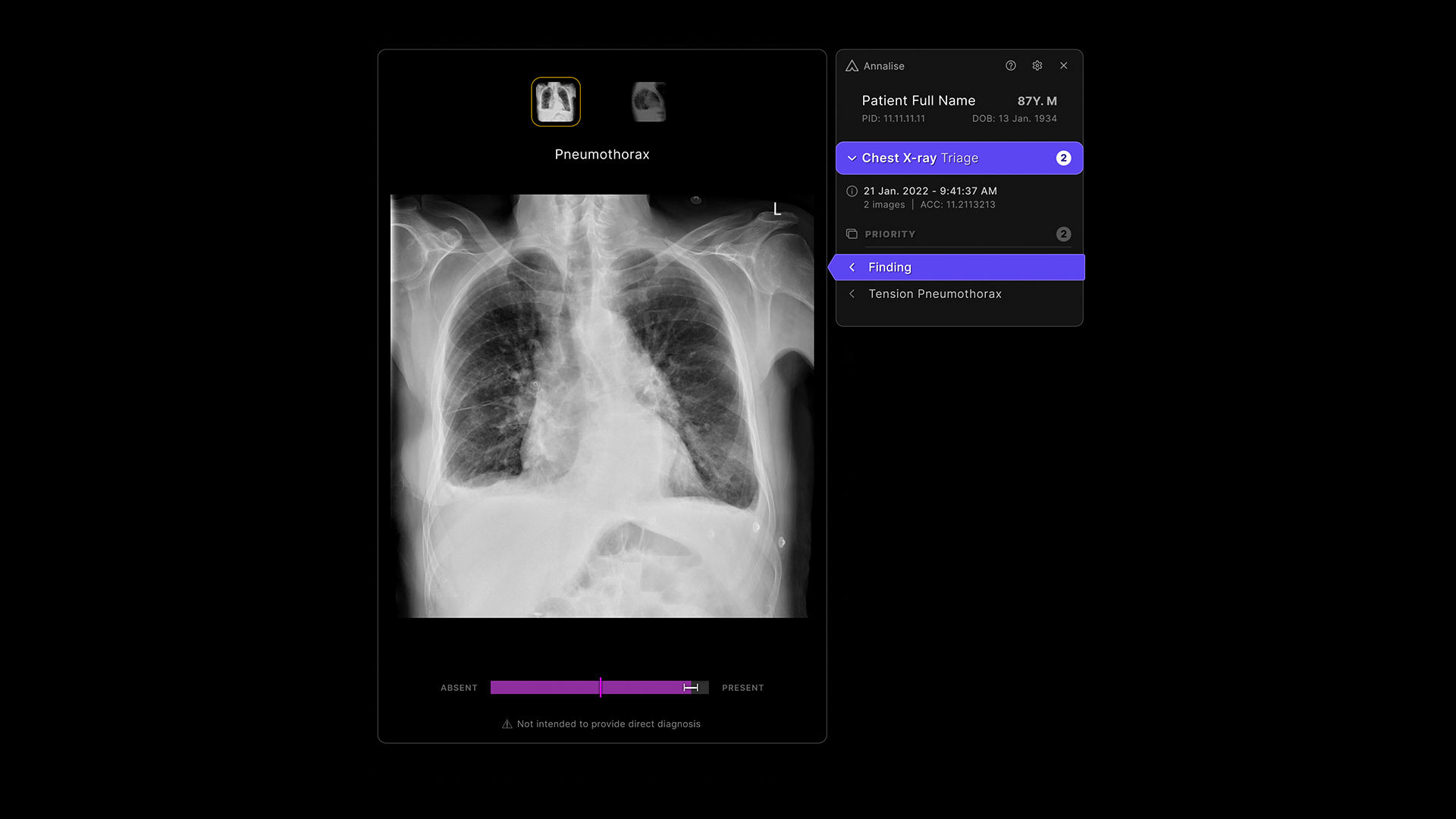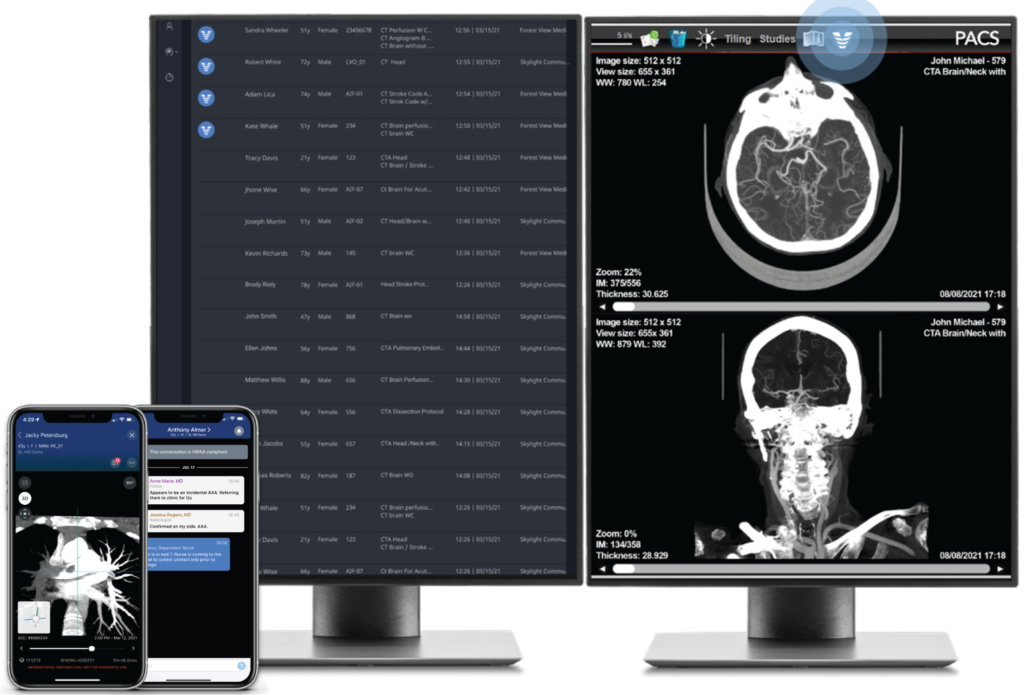RSNA 2022 puts emphasis on empowering patients
The Radiological Society of North America’s 108thScientific Assembly and Annual Meeting (RSNA), held in Chicago’s McCormick Place from November 27 to December 1, highlighted the latest in medical imaging research and education and emphasized the importance of empathy, diversity and equity in health care. The meeting’s theme was “Empowering Patients and Partners in Care.”
As the world’s largest radiology forum, RSNA 2022 featured more than 900 scientific papers in 19 subspecialties, more than 1,300 scientific posters, over 300 education courses and more than 1,450 education exhibits. Registration for RSNA 2022 was close to 38,000.
“The robust attendance numbers demonstrate that people still want the valuable interaction and networking experiences that a meeting like ours provides,” said RSNA executive director Mark G. Watson.
Popular features like the Image Interpretation Session, Case of the Day, and the exciting radiology game show: “What’s Your Emergency? Life in the STAT Lane” offered dynamic experiences for attendees, while the rapid-fire “Fast 5” session featured brisk and engaging presentations focusing on the RSNA 2022 theme.
The meeting also offered inspiring plenary sessions aimed at understanding the patient’s perspective and creating better patient experiences.
“The patient experience doesn’t begin with the report or even the scan,” said Bruce G. Haffty, M.D. in his President’s Address, “Diagnostic Imaging: Value from the Lens of the Patient.”
“From the time the patient schedules an appointment through every follow-up, we should be working to ensure they feel comfortable, informed, supported, seen and heard.”
COVID-19 research developments were featured throughout the RSNA 2022 programme, including new research investigating the long-term, systemic effects of the disease.
Artificial intelligence (AI) was also prominently on display at RSNA 2022, playing a key role in hundreds of research papers, courses and education exhibits. Advances in AI applications and technologies were abundant on the technical exhibition floor.
RSNA 2022’s Technical Exhibits featured 644 exhibitors demonstrating the latest medical imaging technologies in CT, MRI, AI, 3D printing, and more. Technical Exhibits included the expansive AI Showcase and Theater, as well as the Imaging AI in Practice demonstration, the 3D Printing and Mixed Reality Showcase, Innovation Theater, First-time Exhibitor Pavilion, Educators Row and Recruiters Row. The AI Showcase allowed attendees to connect with companies to see the latest in machine learning and AI products and learn more about how to implement these novel applications in their practices. The AI Theater hosted several engaging presentations, as well as a recognition event for the teams with the top performing models in the RSNA Cervical Spine Fracture AI Challenge.
RSNA 2023, RSNA’s 109th Scientific Assembly and Annual Meeting, will take place November 26 to November 30, 2023, in Chicago.
Virtual Access to RSNA 2022 is available on-demand until May 1, 2023, go here: https://www2.rsna.org/timssnet/login/rsna2022
The exhibition floor
Following is a selection of new products that were showcased at the exhibition.
AIRS Medical
South Korea-based AIRS Medical, a leading medical AI solution provider, showcased SWIFTMR, an FDA 510(k)-cleared AI Imaging solution that enhances MR images acquired under various conditions, contributing to better image quality and patient experience. SwiftMR utilizes conventional MR imaging techniques such as parallel imaging and compressed sensing, combined with its award-winning deep learning technology. SwiftMR thus enhances SNR and sharpness of the images, allowing radiologists to read with confidence and ease.
Since its official commercial launch in Korea in the fourth quarter of 2021, SwiftMR™ has been installed in more than 100 hospitals, for an average of 30,000 monthly MRI exams. After its successful launch and with proven performance in Korea, the company is rapidly expanding globally.
Annalise AI
Annalise.ai announced that it has joined the Nuance Precision Imaging Network (PIN) < https://bit.ly/3YzsanT >, connecting Annalise.ai workflow orchestration and diagnostic support solutions to over 12,000 healthcare facilities worldwide. Annalise.ai is one of the largest medical imaging AI companies in the world, developing robust AI solutions intended to assist with the interpretation of radiological imaging studies. This year, Annalise.ai’s chest X-ray products received U.S. FDA clearance for use in triage and notification for a subset of chest X-ray findings.
The collaboration between Annalise.ai and Nuance Communications (a Microsoft company) also harnesses the power of AI from Annalise.ai to enhance the Nuance Clinical Analytics platform. This will complement Natural Language Processing (NLP) within Nuance’s Clinical Analytics platform to create an advanced AI analytics engine, allowing radiologists to better evaluate the results from AI, as well as mine their historical reports using the power of AI through mPower. The combination of pixel-level insights and text-based insights helps providers extract deeper meaning from their medical imaging data.
“We want to transform healthcare for patients around the world every single day and have already impacted more than one million lives globally through our Annalise.ai solutions,”said Lakshmi Gudapakkam, Annalise.ai CEO. “We are extremely excited about the enormous potential of this collaboration to empower radiologists and other clinicians through end-to-end workflow support.”
OpenRad
Radiology reporting specialist OpenRad launched its enterprise remote reporting platform, Enterprise Edition, which enables cloud-based reporting, collaborative workflows across companies and advanced mobile fleet management in one offering.
At a time when increased workload and radiologist shortages are putting a strain on the healthcare system, OpenRad Enterprise Edition allows imaging centres to fully leverage remote radiologists to speed up the diagnostic process, increase efficiency, improve patient experience, and reduce costs.
The OpenRad SaaS based platform provides a fully digital end-to-end teleradiology workflow – combining a domestic cloud platform, OpenRad Cloud (by Biotronics3D), with a DICOM 3.0 routing, translation, compression, and encryption device, OpenRad Cube (by Visbion), which includes the industry leading mobile fleet management solution.
OpenRad’s solutions have been implemented in more than 350 clinics and other static imaging sites as well as in 350 mobile trailers across 18 countries.
OpenRad Enterprise Edition also offers radiologists the option to view images through their existing picture archiving communications system (PACS) via a single cloud. The solution can be easily applied to fleets of mobile scanning trailers where imaging data is seamlessly and securely fed into the PACS.
The solution is designed to help imaging centres optimise the use of equipment and reduce the impact of radiology staff shortages.
Radiologists, referrers, imaging providers and patients are all able to access the web-based platform remotely via any device connected to the internet. This collective intelligence with AI integrations makes it easier to address complex decisions and drive innovation in disease prevention, diagnosis, and monitoring. It also features intelligent worklists, contract management, referrer and patient portals as well as peer review capability.
The OpenRad Cloud offering has minimal on-premise and end user information technology costs, since the zero-footprint solution is fully web-based and utilises existing workstations and monitors.
Brian Plackis Cheng, CEO, OpenRad said: “At RSNA, we are delighted to launch OpenRad Cloud and Cube for the European market and OpenRad Cube for the US market. Our comprehensive SaaS-based platform, Enterprise Edition, will increase collaboration, improve patient outcomes, and reduce costs. OpenRad Enterprise Edition will better connect healthcare professionals, imaging centres, referrers, and their patients, unlocking the full potential of medical imaging. Together with our customers and partners, we will fully deliver the cloud promise and benefits in teleradiology.”
For more information, visit: www.openrad.com
Philips
Philips showcased its latest diagnostic and pathway informatics portfolio featuring end-to-end solutions to enable earlier and more definitive diagnosis. In particular, they showed how their informatics solutions use intelligence to provide patient-centric insights, integrate advanced visualization tools into the workflow and support clinical collaboration to speed up the detection of diseases by leveraging intelligence everywhere along the patient care journey.
The Advanced Visualization Workspace platform with AI-enabled algorithms and workflows is vendor-neutral, providing a single, advanced platform for multiple modalities across cardiology, oncology, neurology, and radiology with a comprehensive suite of advanced visualization solutions to support care teams, and tailored to fit the needs of any hospital network, from a single workstation to an enterprise solution.
The solution includes more than 70 clinical applications for clinical insights, designed to support workflow and diagnostic confidence as well as automated processing for multiple clinical domains across the continuum of care. New applications include the MR cardiac suite, an all-in-one environment for cardiac MR, providing one overview for all imaging data types to support diagnosis and report creation.
Viz.ai
Viz.ai introduced an AI-powered radiology suite, specifically designed to alert the radiologist in their workflow of suspected diseases, prioritize worklists, and connect care teams in real-time. The Viz Radiology Suite integrates into the PACS of healthcare organizations to securely facilitate access to imaging data across departments and streamline patient diagnosis.
The Viz Radiology Suite provides a mobile and web image viewer with AI-powered notifications directly to the worklist. Further-
more, Viz.ai provides a wide range of FDA-cleared algorithms across neurovascular, vascular, and cardiology diseases.
“We recognize the critical role that radiologists play within the healthcare ecosystem, and with this in mind, we continue to invest the necessary time and resources into understanding how we can best support them and the patients they serve,” said David Golan, PhD, chief technology officer and
co-founder at Viz.ai.
For more information, visit: www.viz.ai




